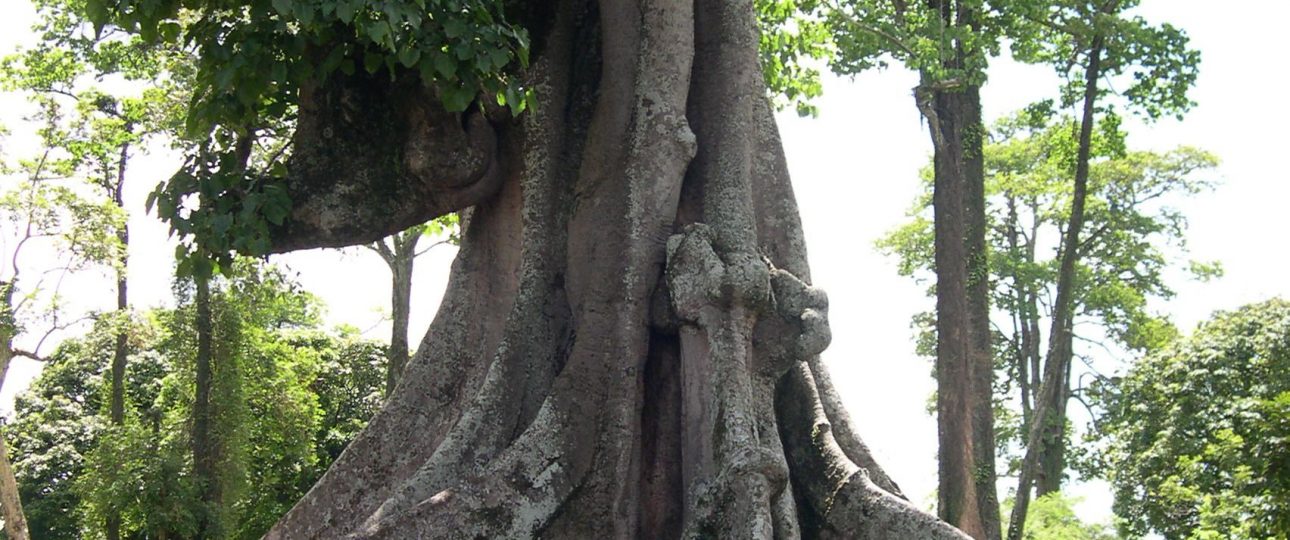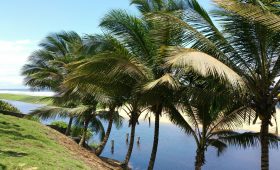Nakayima Tree: A Unique Cultural Landmark in Uganda
Location and History
The Nakayima Tree is located in the Mubende district of Uganda, specifically in Boma cell, Nakavima ward, West division, within Mubende municipality. It stands on the 700-foot-tall Mubende Hill, also known as Boma Hill, just 4 kilometers from Mubende town. The site is approximately 172 kilometers west of Kampala, accessible via the Kampala to Fort Portal highway. The journey from Kampala takes about 3 hours and 15 minutes by car.
This ancient tree, believed to be over 400 years old, is named after Nakayima, a priestess of Ndahura, the first Bachwezi king. Nakayima was considered a mediator between Ndahura and the community, and local legends suggest she vanished into the tree, giving it her name. The tree is revered as a symbol of cultural heritage and spiritual significance, believed to offer power, fertility, and healing to those who seek its blessings.
Unique Features
The Nakayima Tree, known as Mukoko in the Runyoro-Rutoro language, is a towering 40 meters tall. Its botanical name is Sterculiaceae. The tree occupies a surface area of 20 feet and features buttress roots extending 50 meters from the main trunk. These roots form nine rooms, each with its own spiritual significance and believed to possess healing powers. The rooms are dedicated to various deities, including King Ndahura, Musoke (the god of rain), and Nabuzana (the goddess of marriage and fertility).
Near the tree’s buttress roots are three sacred fireplaces: Ddungu, Bamweyena, and Kiwanuka. Each fireplace is associated with different gods, such as Ddungu for hunters and Kiwanuka for war and army commanders. Visitors can explore these areas, gaining insight into the spiritual practices and beliefs of the local community.
Spiritual Significance and Traditions
The Nakayima Tree is a focal point for spiritual activities and rituals. Pilgrims visit to pray, sing, and offer sacrifices to the gods, who are believed to manifest in various forms, including animals. Offerings can include money, animals, cereals, and other items, placed under the tree or scattered around it. Visitors are expected to follow specific customs, such as not cutting the tree’s branches and adhering to dress codes. Women, for instance, must wear long garments and avoid visiting during menstruation.
Visitors are encouraged to hire a local guide to navigate the site and understand its cultural significance. The guides can also assist with exploring the tree’s intricate root system and ensuring a respectful visit.
Scenic Beauty
Beyond its cultural and spiritual importance, the Nakayima Tree is surrounded by lush greenery and rolling hills, offering a serene and picturesque setting. The massive trunk and sprawling branches create a natural canopy, providing shade and a tranquil atmosphere for reflection and exploration.
Best Time to Visit
The ideal time to visit the Nakayima Tree is during Uganda’s dry seasons, from December to February and June to August. These months offer pleasant weather and minimal rainfall, making travel and exploration more comfortable. Visitors should be mindful of the wet seasons, which can bring travel disruptions.
How to Get There
To reach the Nakayima Tree, travelers can hire a private car or taxi from Kampala, with the journey taking approximately 3 hours and 15 minutes. Public transportation options, such as buses or minibusses, are available but may take longer due to multiple stops. Once in the Mubende district, hiring a local guide is recommended for a more enriching experience.
Local Transportation
Walking is the primary mode of transportation around the Nakayima Tree, allowing visitors to fully appreciate the natural surroundings. A local guide can provide valuable insights into the site’s history and significance, ensuring a safe and memorable visit.
Summary of Facts
- The Nakayima Tree is located in the Mubende district of Uganda, on Mubende Hill.
- It is believed to be over 400 years old and holds cultural and historical significance.
- The tree is named after Nakayima, a priestess of the first Bachwezi king, Ndahura.
- The Nakayima Tree stands at a height of 40 meters and features a network of rooms within its roots.
- It is a place of worship and pilgrimage for those seeking spiritual solace.
- Visiting the Nakayima Tree offers an opportunity to immerse oneself in Uganda’s breathtaking landscapes.
- The best time to visit is during the dry season (December to February and June to August).
- Reaching the Nakayima Tree requires a journey to the Mubende district.
- Hiring a local guide is recommended for a more enriching experience.




